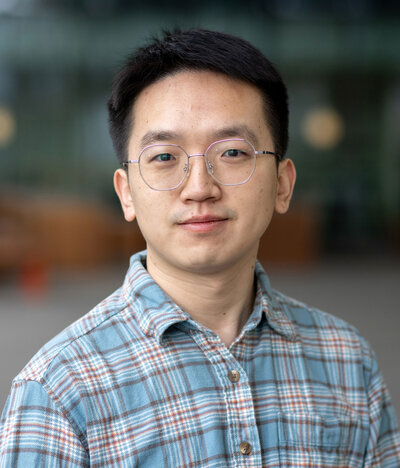Tao Wang
Contact
t.wang4@tue.nlDepartment / Institute

RESEARCH PROFILE
The deep removal of CO2 from industrial sources offers a cost-effective approach to achieving carbon neutrality. However, the prevalent use of amine-based CO2 adsorption agents suffers from oxidative and thermal degradation, as well as emissions when increasing the absorber packing height for deep removal of CO2, leading to negative economic and environmental consequences. Aqueous hydroxides present themselves as a promising alternative to amines. However, new electrochemical regeneration processes are required for hydroxide recovery due to their inability for thermal regeneration.
By integrating the water dissociation occurring in the bipolar membrane (BPM) and the conventional electrodialysis, BPM electrodialysis has demonstrated its effectiveness in regenerating acid and base from their corresponding salt solutions. In a typical BPM electrodialysis configuration, sodium lactate (NaL) can be directly converted into its respective acid and base while remaining separate from the generated acid and base stream. In this BPM electrodialysis process, the efficiency of the regeneration relies on the rate of water dissociation. Therefore, it is crucial to develop tailored high-performance BPMs for efficient hydroxide regeneration.
As an integral part of the “Deep Removal of CO2 and InnoVative Electrification concepts (DRIVE)” project, this study will primarily focus on the design of BPM and the optimization of the BPM electrodialysis process, including materials, stack configuration, voltage, etc. To be specific, the anion exchange layer and cation exchange layer will be fabricated by electrospinning and the interfacial layer containing catalysts will be built by Layer-by-Layer assembly technique. With the BPM developed in this project, we aim at achieving a lactic acid production with an energy consumption of 0.14 kWh/kg.
ACADEMIC BACKGROUND
Tao obtained his BSc and MSc degrees at Ocean University of China in Qingdao with a major in Applied Chemistry. During his MSc, he worked on an electric field-assisted LbL assembly technique which was applied to fabricate a high-performance nanofiltration membrane. In 2017, he worked as a research assistant at the Southern University of Science and Technology where he worked on the design of an anti-fouling membrane by integrating advanced oxidation processes and membrane separation. In 2018, he started his PhD at the University of Twente under the supervision of Prof. Wiebe de Vos. The project in his PhD is about catalytic membranes integrating membrane separation and sulfate radical-based advanced oxidation processes and their application to micropollutant treatment. After obtaining his PhD in Feb of 2023, he worked as a postdoc at the Southern University of Science and Technology in China, focusing on the design of ionic nano energy generators.
In January 2024, Tao started as a post-doctoral researcher in the group of Membrane Materials and Processes (MMP) at the Eindhoven University of Technology (TU/e). In MMP, Tao will work on the development of high-performance bipolar membranes. Through tailoring the bipolar membrane-based electrodialysis in DRIVE project, his project aims to enhance the energy efficiency of electrochemical regeneration steps.
Ancillary Activities
No ancillary activities